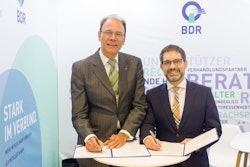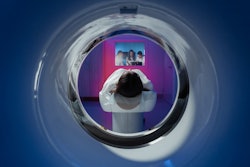The winner of the 2024 German Roentgen Society (DRG) Young Investigator Award, Anton Windfelder, PhD, of the University Hospital of Giessen, has elaborated on how microcomputed tomography can shine light on tobacco hornworm caterpillars.
In a news release, DRG said Windfelder and his team are revealing unknown anatomical structures and are contributing to research into intestinal inflammations, such as Crohn's disease and ulcerative colitis. The DRG judges of this year's Young Investigator Award praised his research as being "particularly groundbreaking."
Windfelder noted, “At first glance, tobacco hornworm larvae and humans look very dissimilar, especially in morphology. But if you look more closely at the intestine, you can see a high degree of comparability.”
 The common name, tobacco hornworm, refers to the larval stages of Manduca sexta, a moth of the family Sphingidae present through much of the Americas. Image courtesy of Kim Weigand / IME Fraunhofer and the DRG.
The common name, tobacco hornworm, refers to the larval stages of Manduca sexta, a moth of the family Sphingidae present through much of the Americas. Image courtesy of Kim Weigand / IME Fraunhofer and the DRG.
“We have shown that intestinal inflammation can be studied using clinical devices such as MR, CT, and PET. A big advantage is that you can scan many caterpillars at the same time, which enables high-throughput imaging. We have also tested new MR contrast agents on caterpillars and shown that they can be visualized in vivo. This saves time and resources compared to mouse models,” he said.
These discoveries are fascinating because it was previously assumed that the intestines of caterpillars were simple and cylindrical, according to Windfelder. "For our research, we are focusing on the midgut because this is where the comparability between mammals, including humans, and caterpillars is greatest," he said. "We were able to show that the anterior midgut and the hindgut in particular are much more complex than previously thought."
To read the full interview, go to the DRG website.



















